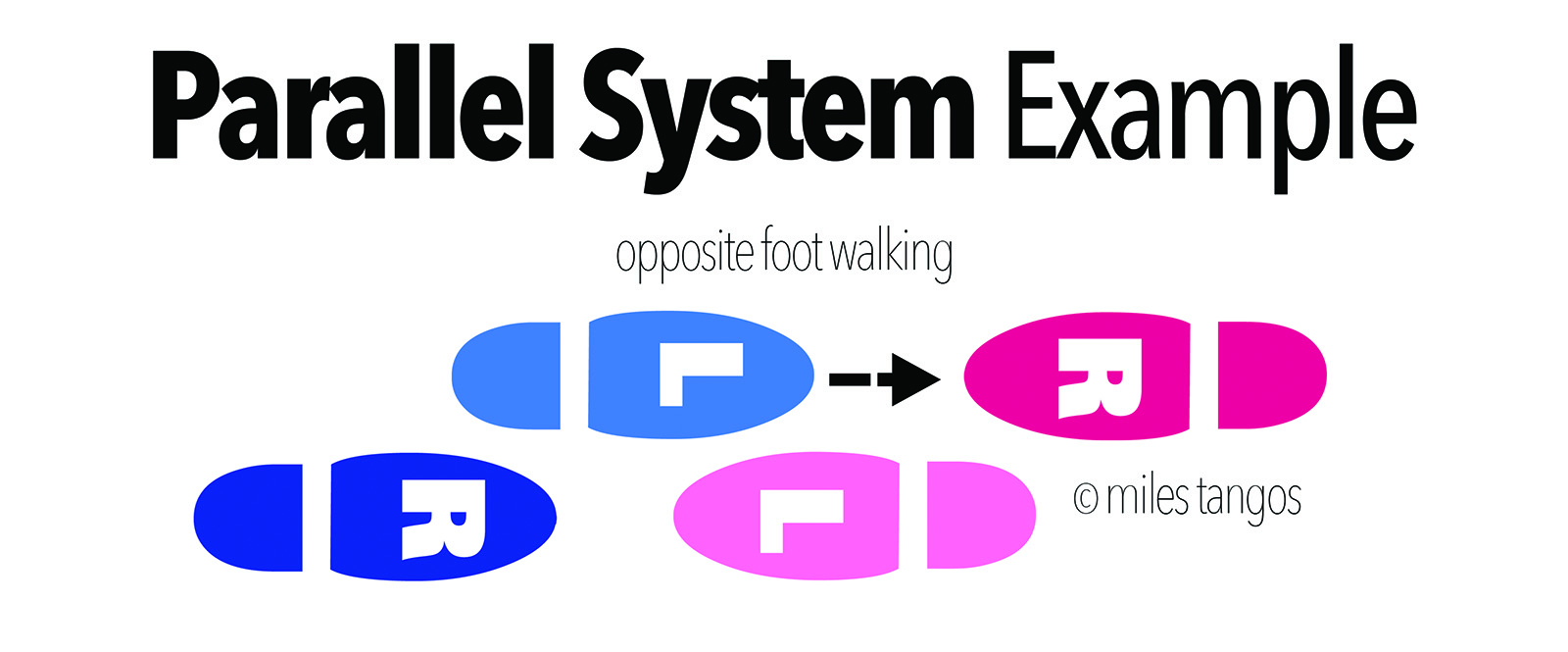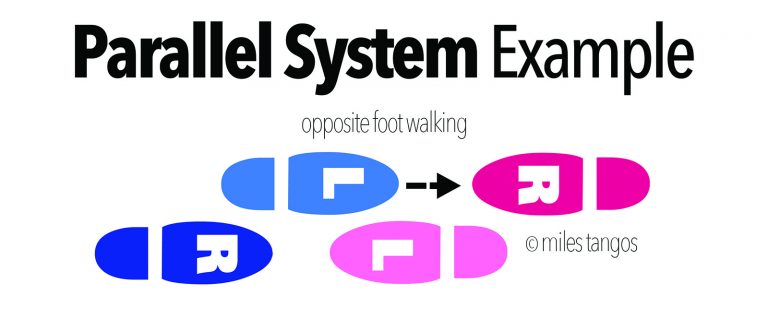Parallel System (or Parallel Walking System). This term refers to the most common form of ‘walking‘ in Argentine Tango, which is from a Tango Topics perspective, the 1st of the 6 Ways of Walking with a partner in the Lead/Follow dynamic. One way to envision Parallel System is what you do every day when you’re walking by yourself, anywhere. It is walking with one foot and then the other, left and then right. These are called ‘walking tracks‘ or paths. You’ll notice that when you walk, that those walking tracks are very close together, as though you were walking on a railroad (almost), that they don’t cross over each other. When we put this idea into Argentine Tango, it is commonly done with a partner in front of you and sometimes next to you. In the common form, it is with the Lead walking forwards (left, then right) on two separate but equal walking paths, into the Follower’s matching but opposite walking paths. In the other uncommon forms, it is walking next to the Follower’s walking paths on either side.
It has two common varieties that are used Parallel System on 2 Tracks, and Parallel System on 4 Tracks, on the open side of the embrace or the ‘dark’ or closed side of the embrace.
The process of walking in Parallel System could be described as the Lead Left steps into Follower’s Right, and then the Lead Right steps into Follower’s Left. Sometimes you’ll hear this referred to as “Opposite Feet Walking” and that’s because that’s exactly what this is. The Lead’s LEFT is stepping into the Follower’s space where their RIGHT foot was, so that’s an opposite foot.
There are 4 varieties of Parallel System Walking that are described in the 6 Ways of Walking (as defined by Tango Topics).
1.) Parallel system on TWO tracks, meaning that the partnership stays on two separate but equal walking paths as if they were on a very narrow train track.
2.) Parallel system on 4 tracks where the partnership walks together on opposite feet on 4 separate walking tracks in open or close embrace.
3.) Requires an orientation change where one partner is walking in front of the other.
And 4.) Where the partnership engages in an orientation change and ends up walking on 4 tracks, but uses the Americana or “Sweetheart Embrace” to do it.


